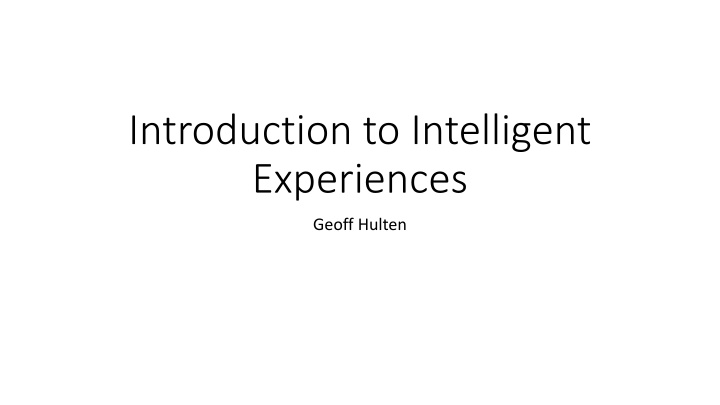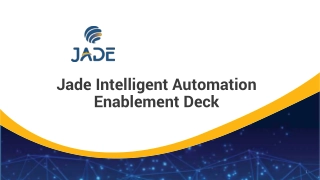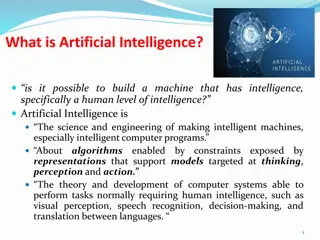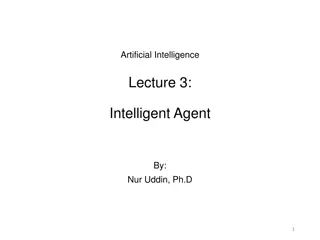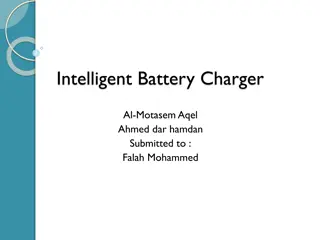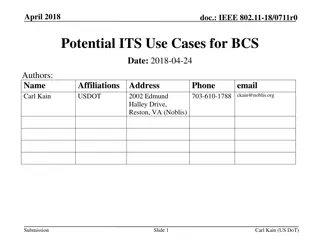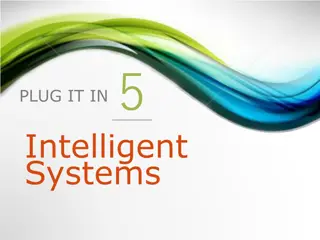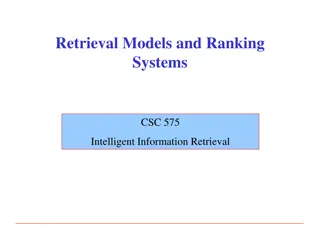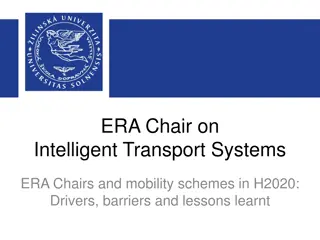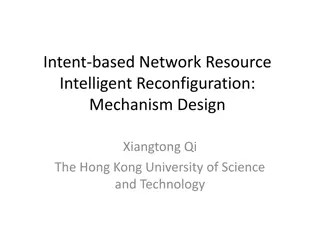Challenges and Goals of Intelligent Experiences in UX Design
Understanding the concept of intelligent experiences as highlighted by Geoff Hulten, this content delves into the goals, examples, and complexities associated with implementing intelligent interactions in various scenarios. It explores how intelligent systems can achieve objectives, change user behaviors, and mitigate mistakes, while also addressing the challenges of managing errors and adapting to evolving contexts.
Download Presentation

Please find below an Image/Link to download the presentation.
The content on the website is provided AS IS for your information and personal use only. It may not be sold, licensed, or shared on other websites without obtaining consent from the author.If you encounter any issues during the download, it is possible that the publisher has removed the file from their server.
You are allowed to download the files provided on this website for personal or commercial use, subject to the condition that they are used lawfully. All files are the property of their respective owners.
The content on the website is provided AS IS for your information and personal use only. It may not be sold, licensed, or shared on other websites without obtaining consent from the author.
E N D
Presentation Transcript
Introduction to Intelligent Experiences Geoff Hulten
What is an Intelligent Experience Hello User! Drive the UX P(LikeSong) P(LikeSong): 32.612% Raw Prediction Modes of Intelligent Interaction: Choose a Song Choose a Song Playing a Song Should I Play a Song? Yes No Organize Annotate Automate Prompt Which to use?
Goals of Intelligent Experiences Achieve Objectives Change behaviors Mitigate Mistakes Cost of mistakes Get Data to Improve Closed Loop Positive outcomes Ease to identify Honest outcome Drive engagement Ease of recovery Unbiased
Example: Home Light Automation Objective: Full Automation Automate: on with moderate threshold Automate: off with conservative threshold Objective: Save Power Never turn on Automate: off with conservative threshold Prompt: turn off with aggressive threshold Annotate: power warning Objective: Keep Users Safe Automate: on with aggressive threshold Turn off after long period of repeatedly passing conservative threshold Mistakes: Mistakes: Mistakes: Light is always on Someone gets hurt User in the dark, waving arms Light flickering on and off User never turns off, system leaves on Lots of prompts, user disconnects Training Data?
Why Intelligent Experiences are hard pt 1: There will be Many Mistakes Mistakes 97% Accuracy very, very good Experience with Mistakes At what point do the mistakes ruin the utility? 100,000 users with 3 interactions per day: 9,000 mistakes per day 63,000 mistakes per week 3.2 million mistakes per year Consider each experience two ways: What to do if the user got there because the model was right What to do if the user got there because the model was wrong Each user expects: 1 mistake per ~11 days ~30-35 mistakes per year
Why Intelligent Experiences are hard pt 2: The Mistakes Will Change Intelligence Changes You have a better model +2%! More things got better than worse But some things got worse Problem Changes New contexts appear Model tends to be worse at new things Latency in catching up? New mistakes Randomly distributed? Focused on certain users? Cheap or costly? Old contexts disappear Things users liked yesterday gone today Meaning of a context change Enough users perceive it differently But not all users Which part of the curve? Change can feel like a mistake even when it is for the good
Why Intelligent Experiences are hard pt 3: The Uncanny Valley Familiarity Human Factors Tool or Relationship? 0% Human Likeness 100% Same Input different output ML mistakes not like human mistakes Humans get fatigued Intelligence can be creepy
Balancing Intelligent Experiences Machine Learning
Balancing an Intelligent Experience Forcefulness If the intelligence is poor E.g. when the system is new Frequency If the cost of a mistake is high E.g. a surgical robot Value of Success If there is legacy UX E.g. integrating into an existing application Cost of Failure Quality of the Intelligence
Forcefulness An experience is forceful if: It is hard for the user to miss It is hard for the user to ignore It is hard for the user to stop Forceful experience useful when Model quality is high Value of success >> cost of failure Training data is valuable An experience is passive if: It is easy for users to miss It is easy for the user to ignore It takes explicit work to accept Passive experience useful when The interaction is frequent Value of success << what user is doing Cost of mistake is high
A Balancing Example: Spam Filtering Delete 1 0.9 0.8 0.7 Intelligence Quality 0.6 Suppress 0.5 0.4 0.3 0.2 Inform 0.1 0 0 0.1 0.2 0.3 0.4 0.5 0.6 0.7 0.8 0.9 1 Experience Forcefulness Hybrid Experience
Frequency of Interaction How often is the model called, and how do the predictions get used Frequent interactions tend to fatigue users (especially forceful ones) Get desensitized and start ignoring the intelligent experience Get irritated and turn off the intelligent feature Infrequent interactions have fewer opportunities to create value
Approaches to Frequency Now Playing Now Playing Now Playing Now Playing >> Whenever Prediction Changes For Significant Changes Interaction Budget User Initiated Every second: Call Model Update UX Update if: different and ? > ? different for N seconds No more than: N per session N pre minute No more than: N per session N pre minute Useful when: Realtime control Extreme change High-quality model Useful when: Reducing jitter Reducing fatigue Latency is acceptable Useful when: Testing interactions Reducing fatigue Gathering Data Useful when: Users will actually do it Backstop for others Model User & Interact as often as they will respond favorably
Value of Success Interaction Valuable to User if Noticed that it happened Interaction Valuable to You if Increases engagement Cares that it happened Improves sentiment Connects outcome to intelligence Causes user to give you money Feels it was in their interest Creates good training data Thinks the system is cool
Cost of Failure The Cost of Mistakes Mitigating the Mistake Knowing there is a Mistake User can recover from the damage if they do notice Users don t really care Undo experience Manual undo Support escalation Users waste a few seconds Double checking intelligent system s work Reduced value of success Loss of trust Fatigue Costs the user money Other options Delay the action Avoid bad mistakes altogether Limit Interactions Costs you money User can t blame the intelligent system if they don t notice Hurts Engagement / Sentiment
Summary Goals of Intelligent Experience Present predictions to the user Balancing Intelligent Experiences Forcefulness Achieve the users & system s objectives Frequency Minimize intelligence flaws Value of Success Create data to grow the system Cost of Failure Hard Because of: Mistakes Change Human Factors Quality of the Intelligence Change can feel like a mistake even when it is for the good
